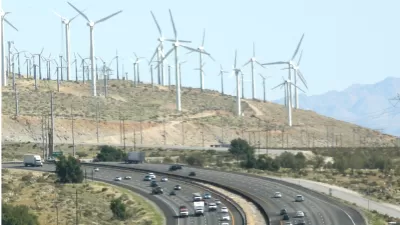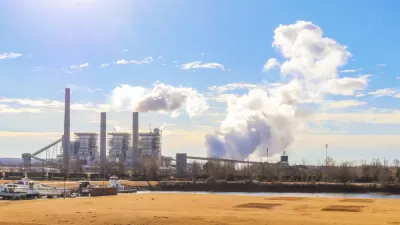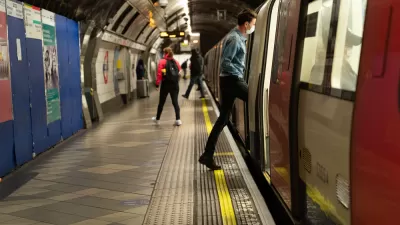The dramatic reductions in carbon emissions during the last year only highlight how drastically humans must change behavior to meet climate goals.

In the early months of the pandemic, the reduction in driving, carbon emissions, and traffic shone as one bright spot in the darkness of COVID-19. But the dramatic drop in greenhouse gas emissions brought on by pandemic closures won't last, writes Amina Khan in the Los Angeles Times, if governments don't take meaningful steps to maintain lower emissions and aggressively strive to hit their climate policy goals.
"To meet the Paris climate targets, the U.S. and the rest of the world will need to cut their emissions by about 1 billion to 2 billion metric tons per year — near-pandemic-level reductions — for every year throughout the 2020s." Yet "most current COVID-19 recovery plans are in direct contradiction with countries’ climate commitments."
One solution is to "ensure that post-pandemic growth is also tied to building a greener economy" and that new policies foster clean technologies as part of the economic recovery. The reduction in energy consumption during the pandemic was "deeply disruptive" to the lives of most people. But while Americans will largely go back to using the same energy-consuming devices and services they used before—and, in some cases, more of them as delivery services and digital tools become daily necessities—making those devices and services more energy-efficient can have similar and less disruptive benefits.
FULL STORY: COVID-19 helped slash 2020’s carbon dioxide emissions. How will we keep it going?

Study: Maui’s Plan to Convert Vacation Rentals to Long-Term Housing Could Cause Nearly $1 Billion Economic Loss
The plan would reduce visitor accommodation by 25,% resulting in 1,900 jobs lost.

North Texas Transit Leaders Tout Benefits of TOD for Growing Region
At a summit focused on transit-oriented development, policymakers discussed how North Texas’ expanded light rail system can serve as a tool for economic growth.

Using Old Oil and Gas Wells for Green Energy Storage
Penn State researchers have found that repurposing abandoned oil and gas wells for geothermal-assisted compressed-air energy storage can boost efficiency, reduce environmental risks, and support clean energy and job transitions.

Santa Barbara Could Build Housing on County Land
County supervisors moved forward a proposal to build workforce housing on two county-owned parcels.

San Mateo Formally Opposes Freeway Project
The city council will send a letter to Caltrans urging the agency to reconsider a plan to expand the 101 through the city of San Mateo.

A Bronx Community Fights to Have its Voice Heard
After organizing and giving input for decades, the community around the Kingsbridge Armory might actually see it redeveloped — and they want to continue to have a say in how it goes.
Urban Design for Planners 1: Software Tools
This six-course series explores essential urban design concepts using open source software and equips planners with the tools they need to participate fully in the urban design process.
Planning for Universal Design
Learn the tools for implementing Universal Design in planning regulations.
Ascent Environmental
Borough of Carlisle
Caltrans
Institute for Housing and Urban Development Studies (IHS)
City of Grandview
Harvard GSD Executive Education
Toledo-Lucas County Plan Commissions
Salt Lake City
NYU Wagner Graduate School of Public Service





























